Curator’s Favorite: H.F. Dinkelacker Photograph Album
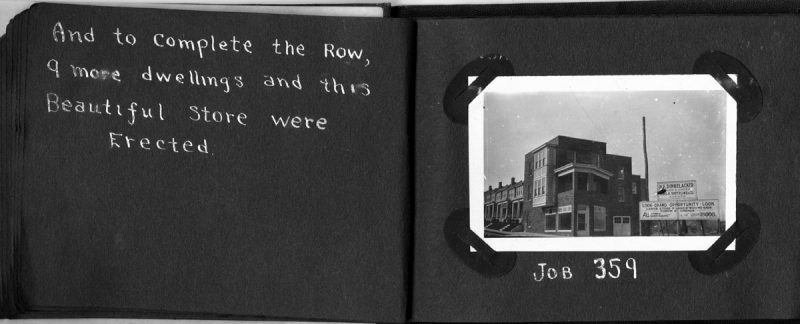
H.F. Dinkelacker Photograph Album. Album of 24 gelatin silver prints, 1924.
By 1924, the year that this photograph album was given as a Christmas gift to Harry F. Dinkelacker by his son Paul, the snapshot had become commonplace. The small, candid photograph was ubiquitous after the introduction of the Eastman Kodak hand-held box camera in 1888. The easy-to-use camera allowed everyone, not just trained professionals and amateurs, to take a photograph. The quick fire images these cameras produced, coined snapshots, were much less formal than professional work and captured moments of the everyday life of family, friends, and colleagues.
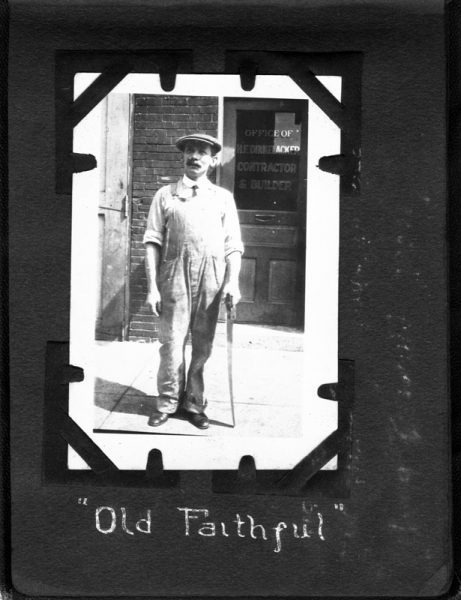
Compiled by the contractor’s son Paul, the palm-size booklet opens with a portrait of the recipient, “Old Faithful,” which is then followed by images depicting the offices, shops, yards, construction sites, completed jobs, and employees associated with Dinkelacker.
This snapshot album, somewhat atypical for the Print Department, is a delightful little collection of 24 captioned black and white photographs documentingpeople and places in the life of 42-year-old Philadelphia contractor Harry F. Dinkelacker, president of Dinkelacker & Keating. Compiled by the contractor’s son Paul, the palm-size booklet opens with a portrait of the recipient, “Old Faithful,” which is then followed by images depicting the offices, shops, yards, construction sites, completed jobs, and employees associated with Dinkelacker. The album literally and figuratively provides snapshots of a momentous year for the man.
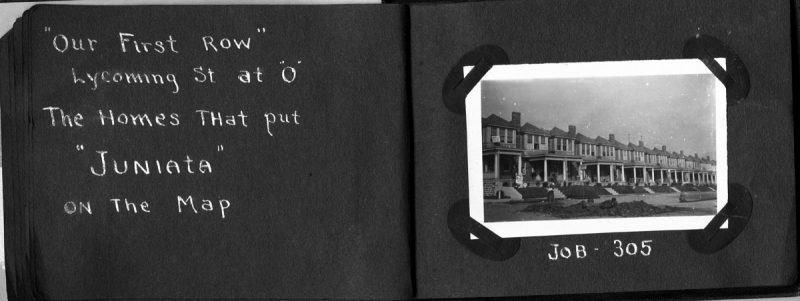
The image above shows residences built by Dinkelacker at Lycoming and O streets, which are declared by the album’s compiler as the “homes that put Juniata on the map.”
The holiday gift documents the relocation of Dinkelacker’s office and shop and his firm’s construction of new row homes in the burgeoning neighborhood of Juniata Park (Northeast Philadelphia). The image above shows residences built by Dinkelacker at Lycoming and O streets, which are declared by the album’s compiler as the “homes that put Juniata on the map.”
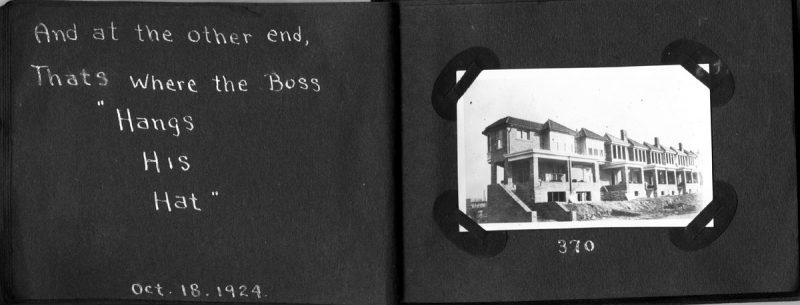
The contractor lived in one of the new Juniata residences at 4159 O Street. According to the 1930 census, issued six years after this photograph was taken, the house was valued at $18,000, about $224,000 today.
The contractor lived in one of the new Juniata residences at 4159 O Street. According to the 1930 census, issued six years after this photograph was taken, the house was valued at $18,000, about $224,000 today.
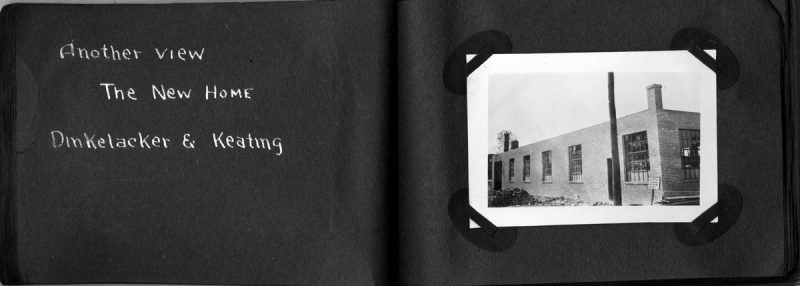
Dinkelacker’s new office was at Ruan and Leiper streets, a few blocks to the east of his O Street residence. He had previously operated his business from McKean Street in South Philadelphia. The move was likely predicated on his new business opportunities in the Northeast.
Dinkelacker’s new office was at Ruan and Leiper streets, a few blocks to the east of his O Street residence. He had previously operated his business from McKean Street in South Philadelphia. The move was likely predicated on his new business opportunities in the Northeast.
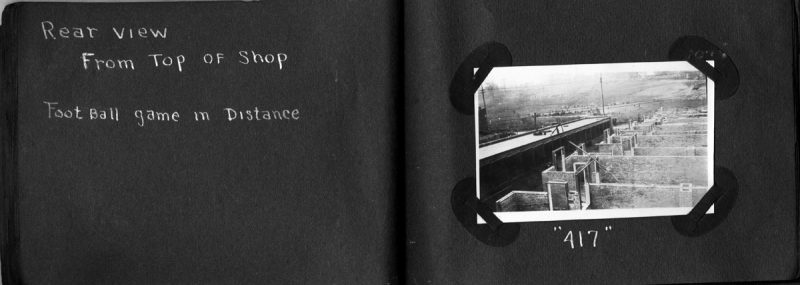
As this photograph shows, the relocated shop was also part of new construction, presumably by the firm. A football game occurring at the time of the view is visible in the distant background.
As this photograph shows, the relocated shop was also part of new construction, presumably by the firm. A football game occurring at the time of the view is visible in the distant background.
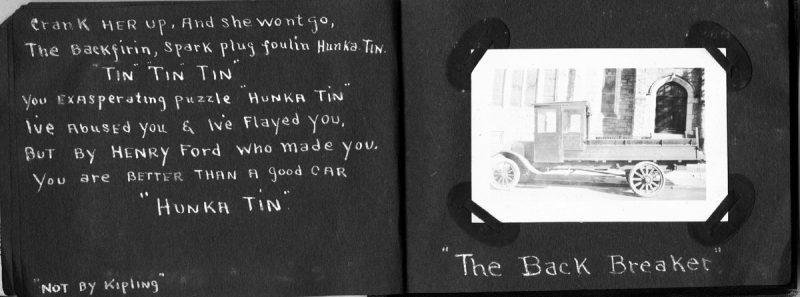
Another theme in the album is the shop truck, “the Back Breaker.” The old Ford is memorialized with humorous prose in a number of photographs, including this one.
Another theme in the album is the shop truck, “the Back Breaker.” The old Ford is memorialized with humorous prose in a number of photographs, including this one.
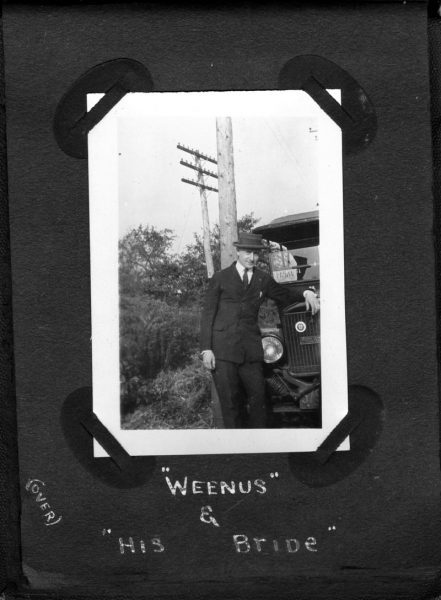
Even its driver, the shop’s office manager “Weenus,” garners a spot in the album through a portrait of him and the truck, his “bride.”
Even its driver, the shop’s office manager “Weenus,” garners a spot in the album through a portrait of him and the truck, his “bride.”
Paul Dinkelacker likely never imagined that this album would eventually reside in a research library. The Print Department is fortunate to have acquired it. This artifact, showcasing a year in the life of a contractor, provides not only a window on to the social world of a successful tradesman, but also a record of the early built environment of a Philadelphia neighborhood.
Erika Piola
Senior Curatorial Associate
